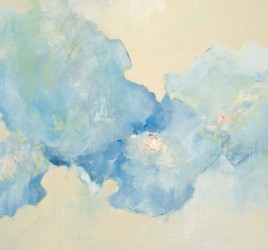I Don’t Understand Contemporary Art as a Horizontal Timeline
‘Contemporary Art’ (not to be lumped in with modern art) is a very difficult thing to understand if you are like me and not formally educated on the subject. I would, of course, consider myself an art lover and someone that appreciates art enough to try to follow movements, my favorite artists, and try sort out what kind of art is what.
The way I see it, contemporary art doesn’t exist on a horizontal time line that begins with cave drawings and is waiting to continue being written tomorrow. Rather, I see it as pebbles thrust into a pond. Each stone tossed represents an “ism” or a “post” this or a “neo” that, and the amount of force each stone creates effects how large and how long its ripples expand out ward. For example: some art movements after World War II have created such waves that the surge still expands into our time and collides with today’s new ideas and technology causing a dither in the water and creating movements that are entirely new.
Modern art is easy to grasp, in the respect of movements. What has been judged as unimportant has already faded out of history and no longer dilutes what is decidedly influential. Contemporary art is no different than any other throughout time. Ideas and processes arise, some fade quickly, some consume others. To provide cohesiveness among the fervor, the term “contemporary art” is effectively the pond.
What is so exciting about today’s art, I find, is the same thing that makes it frustrating: only time will tell what ripples will resonate into history, and what magnitude of ripple I am apart of.


